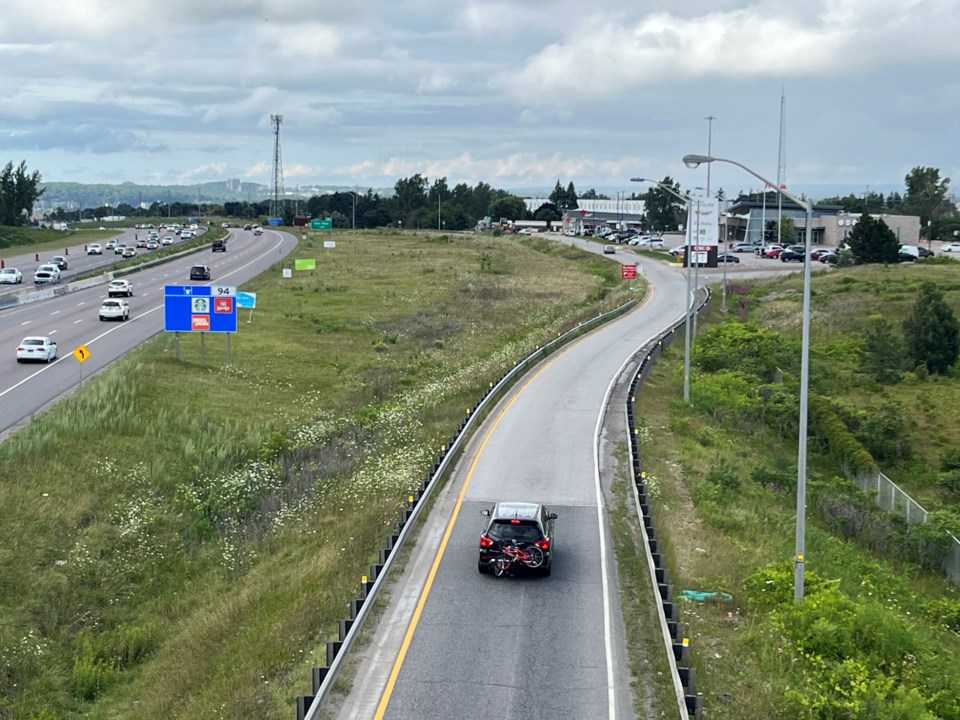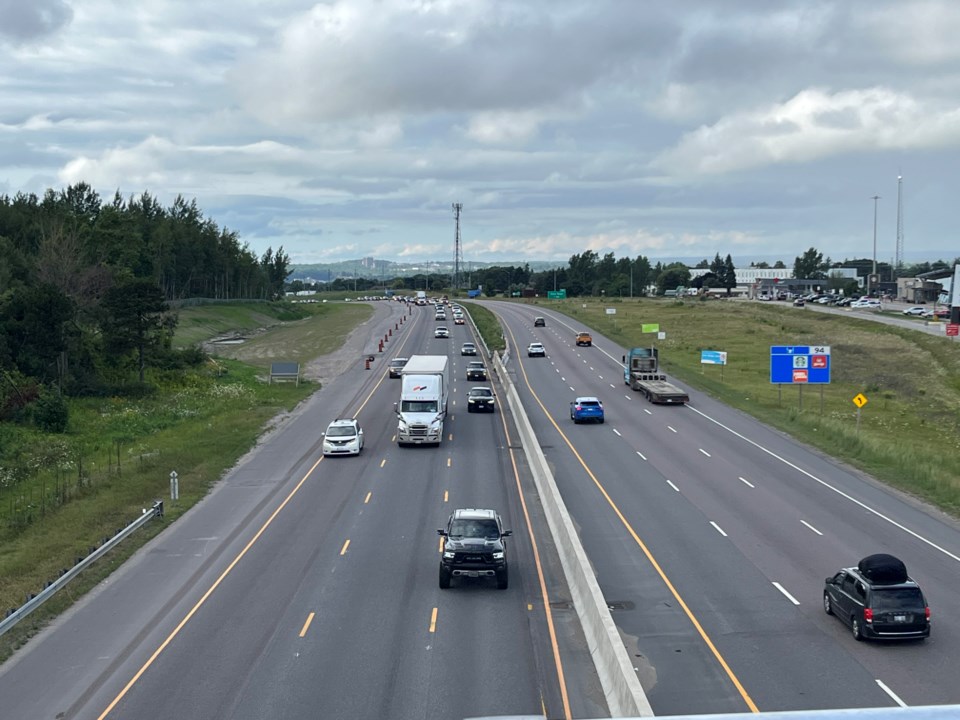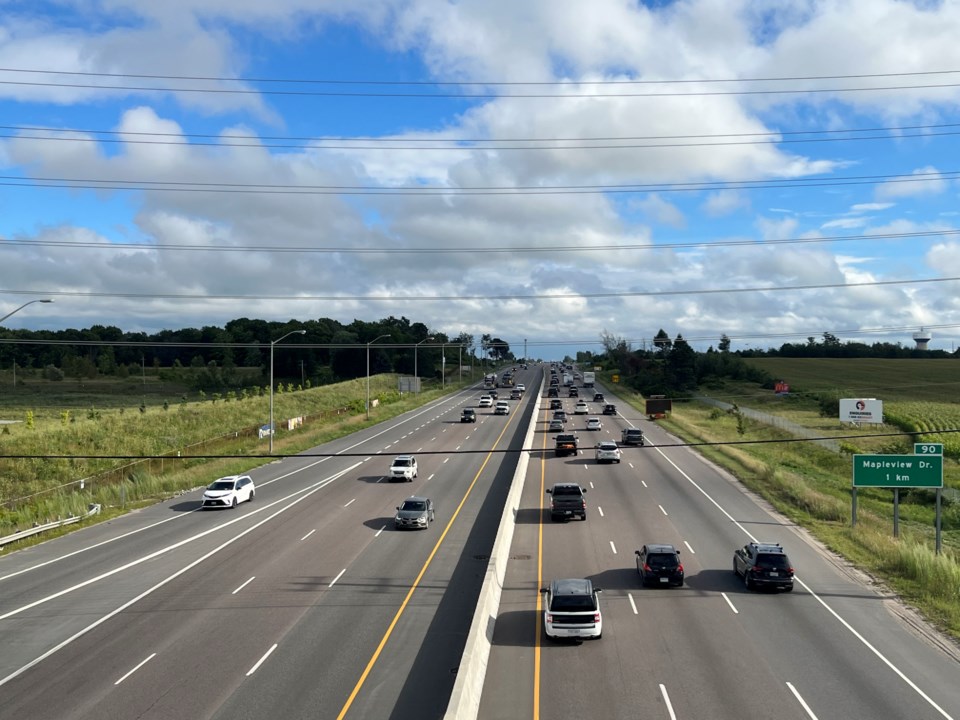For this column, I turn my attention to the history of our highway system, in particular the development of the 400 series of highways.
If you have been reading some of my columns over the past few years, you will remember a key factor in the region's development is its strategic positioning in the provincial transportation system, whether it be the railroad, water system, or the development of the road system beginning with Yonge Street.
Long before we arrived, Indigenous peoples had set up a network of transportation choices and, in most cases, we simply adopted their existing pathways and trails for our own use. I have previously examined many of these transportation routes. Today, I intend to look at 400-series highways, beginning with the establishment of the Don Valley Parkway and highways 404 and 400.
Our ancestors were commuters and today we remain closely tied to the availability of a well-developed transportation network for work, entertainment, business, and the movement of goods. Therefore, I think it is prudent to examine this transportation network, which has blessed this area and allowed us to prosper.
So, what is the 400-series of highways? It constitutes a network of controlled-access roadways spreading across Ontario. This network of highways has become an integral part of Ontario’s transportation system and, given our proximity to this network, we have enjoyed tremendous growth and prosperity because of it.
Let us first look at the network, beginning with its initial inception and planning. The 400-series was conceived in the late 1940s as part of a major post-war highway expansion master plan. This plan, it was hoped, would create a high-speed road network serving the growing population of southern Ontario and improve transportation between its major cities.
The first highway in the 400-series, Highway 400, was opened in 1952, connecting Toronto to Barrie. In my column on Highway 9 (Davis Drive), I discussed how important the construction of this thoroughfare was to Newmarket and area with its opening.
The construction of other highways like the 401, 403 and 427 would follow and, over the years, the 400 series of highways would continue to expand, connecting our region to various areas in Ontario.
The construction and improvement of these highways has evolved in a series of stages and projects over the years.
I mentioned previously the 400 series of highways is a controlled-access network, but just what is controlled-access design? The term refers to a highway transportation network known for its controlled-access design, which includes limited access points, controlled entrances and exits, and high-speed limits.
Today, we take this concept for granted, but the idea of a highway that featured a series of entrances and exits and higher speed limits was a new concept to Canada, although it was commonplace in much of Europe at the time.

One of the reasons I wanted to examine the growth and development of this network is the pivotal role these highways have played in supporting our economic growth and development, enabling the efficient transportation of goods and people.
Some segments of the 400-series highways, such as the 407 Express Toll Route, operate as toll roads, offering drivers the option of a faster, uncongested route in exchange for the paying of toll fees. The concept of adding additional toll roads seems to be gaining support given the high costs of maintaining this transportation network.
Ontario has continued to expand and improve the 400-series to accommodate the ever-increasing traffic demand, to enhance safety, and to reduce congestion. This will certainly add to the cost and has prompted a discussion of how this network will be financed in the future, hence the renewed discussion of toll roads, an old concept that seems to be finding some support.
Certain sections of the 400-series have become iconic, like the Don Valley Parkway (DVP)/404 combination and 401, which is one of the busiest highways in North America.
We shall now turn to the history of the DVP/404 combination.
The concept of the DVP was conceived in the 1940s as Toronto was experiencing significant post-war growth. However, it was not until the late 1950s that construction began, and it continued into the early 1960s.
Today, we take it for granted, but we must remember the DVP was built along the Don River valley, requiring extensive engineering expertise in order to navigate the challenging terrain. I have been on the DVP during a rainstorm and the road can become inundated with excessive amounts of water, reminding us of what a feat of engineering the highway represents.
The DVP officially opened April 1, 1966, providing a crucial north-south route to Toronto from the Newmarket area. I can still remember travelling to Toronto via Yonge Street and the hassles it incurred.
Over the years, the DVP has undergone several expansion and improvement projects to accommodate the region’s growing population and ever-expanding traffic demands.
The DVP plays a critical role in Toronto’s transportation network, connecting the northern suburbs, including the Newmarket area, to downtown and providing access to the various neighbourhoods and destinations efficiently.
I mentioned above the engineering issues related to the building of a major highway through the Don River valley. First you had the environmental concerns and the efforts made to mitigate the effects and protect natural habitat. Then there were the commuter challenges. The DVP is notorious for its traffic congestion, especially during rush hours, leading to the various initiatives that were undertaken to improve traffic flow.
Could it have been designed better? Of course, but it does work.
The future of the DVP will undoubtedly include further expansion and modernization projects designed to enhance its capacity and efficiency. It will remain a vital component of Toronto’s transportation infrastructure and contribute to the development of our area’s growth.
The addition of the 404, linking with the DVP, was an incredible step forward for York Region. I can remember having to travel south on Bayview, Leslie, or Don Mills Road to access the DVP before the advent of the 404.
Planning for the 404 commenced in the 1950s as part of the expanding road network master plan for the Greater Toronto Area (GTA).
Construction of the initial segment began in the early 1960s with the first section of Highway 404 running from Sheppard Avenue in Toronto to Davis Drive in Newmarket, officially opening in 1972.
Over the years, it has undergone several expansion projects to the north, in an attempt to accommodate the growth of the local population base to service the increasing traffic demands in the GTA that our extensive growth has brought about.

The 404, once completed, represented a vital north-south route connecting Toronto to the northern suburbs and rural areas of York Region. It offered an alternative to the 400 and an eastern route home instead of having to cross the city to access the 400.
It seamlessly connects with the DVP and the Gardiner Expressway from Toronto and continues north. Premier Doug Ford’s plan is that eventually it will connect to Highway 400 in the Bradford area via a new highway.
There is always a discussion of the environmental effects of each new highway extension, and the construction of the 404 had its own environmental effects, particularly on the local wetlands and ecosystems. Efforts were made to mitigate these effects and preserve the natural environment.
It is my hope that continued due diligence will be paid to all the various effects the building of the new Highway 413 will bring before it proceeds.
Highway 404 has served, just as Highway 400 and the DVP did historically, a crucial part of the GTA’s transportation network, providing our area with a major commuter route and facilitating the continued economic and residential growth in our region.
The 400-series has become the backbone of our local transportation infrastructure, not only connecting our cities and regions, but fostering continued economic growth. The highways will continue to reflect our local growth and development over the coming decades and find their place in our history.
Just as an effective transportation system allowed local Indigenous peoples to prosper for thousands of years, the paths and trails we build will hopefully allow us to continue to prosper and grow.
I shall return to this theme in the coming months, going into more depth on this vital transportation network and its historical effect. Once the final decision is made about the Bradford Bypass, I shall pick up where a previous column on the Pine Fort left off.
Sources: Ontario government documents on transportation policies and projections; Toronto Star; The 400 Series of Highways — A History; A Contemporary History of York Region; Newmarket Era; oral history interviews conducted by Richard MacLeod.
Newmarket resident Richard MacLeod, known as the History Hound, has been an area historian for more than 40 years.



